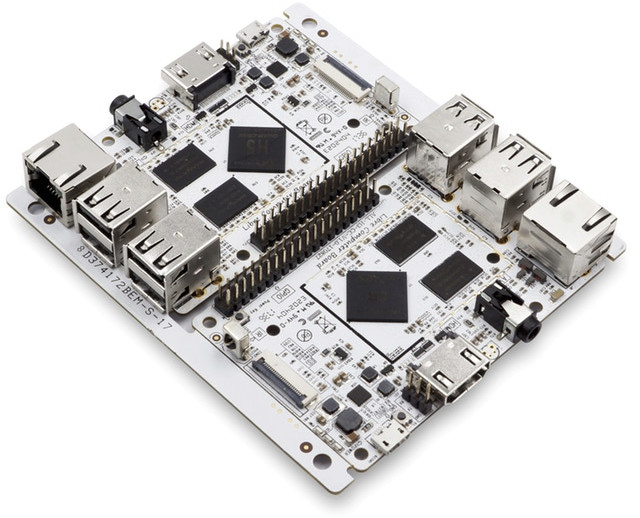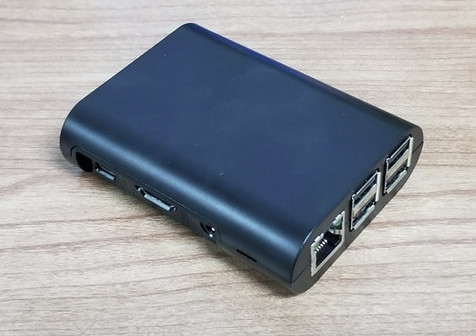A few months ago, Libre Computer introduced Le Potato board (aka AML-S905X-CC) powered by Amlogic S905X processor plus up to 2GB RAM, and using Raspberry Pi 3 form factor.
The company is now back with three Tritium boards, using the same form factor, but instead powered by Allwinner H2+, H3, or H5 processors, with a lower price point as the Tritium IoT board (H2+ / 512 MB RAM) goes for $9 only.

Tritium boards (ALL-H3-CC) specifications:
- SoC and Memory
- Tritium IoT – Allwinner H2+ quad core Cortex A7 processor with Mali-400MP2, 512MB DDR3
- Tritium 1GB – Allwinner H3 quad core Cortex A7 processor with Mali-400MP2, 1GB DDR3
- Tritium 2GB – Allwinner H5 quad core Cortex A53 processor with Mali-450MP4, 2GB DDR3
- Storage – 1x micro SD Card slot, eMMC module connector
- Video & Audio Output
- Tritium IoT – HDMI up to 1080p60, AV port
- Tritium 1GB & 2GB – HDMI 1.4 up to 4K30, AV port
- Camera – Parallel camera interface
- Connectivity – 10/100M Ethernet
- USB – 4x USB 2.0 host ports
- Expansion – 40-pin Raspberry Pi header with I2C, SPI, PWM, UART, 5V, 3.3V, and GPIO
- Debugging – UART via header for access to the serial console
- Misc – IR Receiver, u-boot button
- Power Supply – 5V via micro USB port
- Dimensions – Raspberry Pi 3 form factor
The boards do not perform as fast as the Amlogic S905X one, and the I2S and S/PDIF header are gone, but a camera connector has been added to connect a camera. Tritium IoT board runs Linux only (e.g. Ubuntu 16.04), but Tritium 1GB can run also Android 7.0, and Tritium 2GB Android 7.1, beside the listed Linux distributions:
- Ubuntu 16.04 by Libre Computer Project
- Debian 9 Stretch by Libre Computer Project
- Ubuntu 16.04 by Armbian
The Linux source will be released on Github as they’ve done for Le Potato, for which they’ve also released the PDF schematics, and CE/FCC certifications.

The project has been launched on Kickstarter with a $10,000 goal. The bare boards are available for respectively $9 (IoT), $19 (1GB), and $29 (2GB), but you can also get kits with all accessories such as the $59 “Tritium IoT Kit Special” with comes with:
- Tritium IoT Board
- 8GB eMMC 4.x Module
- Push-Pin Heatsink with Thermal Tape
- 5.1V/2.5A MicroUSB Power Supply
- Active Cooling Media Center Polycarbonate Case
- 1m HDMI Cable
- 8GB MicrorSD Card
- Wireless RF Remote with Mini Keyboard and Touchpad
Shipping is not included and depends on the selected reward, but for example it adds $7 to $9 to Tritium IoT board, and $10 to $14 to the kit listed above. Delivery is planned for January 2018, and general availability (outside the KS campaign) in February 2018. Hardware customizations are accepted for orders of 500 units or more.
The market is starting to get crowded with Allwinner H development boards thanks to the Orange Pi and NanoPi board families, but that also means software support should be good, and AFAIK, Tritium boards are the first to be compatible (HW + Mech) to Raspberry Pi 3, excluding NanoPi Duo + mini Shield which does not come with HDMI, and is limited to Allwinner H2+ with 512MB RAM. That means you could reuse or purchase RPi 3 accessories and they should work either out of the box (enclosures), or with some SW development efforts (add-on boards). RPi MIPI camera and display modules won’t work.

Jean-Luc started CNX Software in 2010 as a part-time endeavor, before quitting his job as a software engineering manager, and starting to write daily news, and reviews full time later in 2011.
Support CNX Software! Donate via cryptocurrencies, become a Patron on Patreon, or purchase goods on Amazon or Aliexpress




